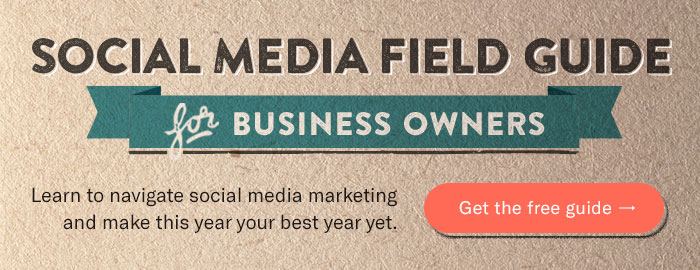Insurance agents can learn a lot from Uber’s business success and marketing strategies, both the good and the bad. While Uber’s business model is nothing like that of an insurance agent, many aspects of its marketing triumphs and troubles are universally applicable to other industries.
We’re well aware of the headaches that ridesharing services cause for insurance agents in terms of coverage, and we haven’t turned a blind eye to their PR nightmares, or the ridiculous and shady mistakes Uber has made as a business.
However, the fact remains that Uber is a juggernaut that has experienced explosive growth and completely blindsided the transportation industry almost overnight. The lessons from the company’s hits and misses are extremely insightful for any business owner and can be used to enhance your marketing strategy.
Uber What? Why?
For the uninitiated, Uber is an on-demand transportation service that allows regular people to sign up as drivers using their personal vehicles, powered by a smartphone app. Having tapped into a lucrative market, Uber’s business model creates jobs for drivers while giving riders a much-needed alternative to traditional transportation options. So what does that have to do with insurance agents?
As a company, Uber is accessible, highly local and offers killer customer service. Its exponential growth has been largely due to word-of-mouth referrals. In fact, just a year after launching, every seven Uber rides generated a new rider. Wouldn’t you want to be known for those same qualities in the insurance industry?
Here’s what you, as an insurance agent, can learn from Uber:
1: Speak Local
 Uber operates worldwide, but expansion work has been hyperlocal. Each market has its own customer service team, a city-specific blog and thoughtful marketing tailored to the population to foster community. Because of the local flavor, Uber inspires feelings of accessibility, trustworthiness and loyalty.
Uber operates worldwide, but expansion work has been hyperlocal. Each market has its own customer service team, a city-specific blog and thoughtful marketing tailored to the population to foster community. Because of the local flavor, Uber inspires feelings of accessibility, trustworthiness and loyalty.
Use your local knowledge to your advantage. Make sure your policyholders know that you are familiar with their specific needs and not a faceless voice at the end of a 1-800 number.
2: Find Your Personality
 “We’re playful but professional. We don’t take ourselves too seriously,” says Max Crowley, Uber’s Senior Community Manager. “We put a fun brand around a ground transportation service. I don’t think anyone’s done that before.”
“We’re playful but professional. We don’t take ourselves too seriously,” says Max Crowley, Uber’s Senior Community Manager. “We put a fun brand around a ground transportation service. I don’t think anyone’s done that before.”
Sure, sometimes insurance isn’t all rainbows and unicorns, but that doesn’t mean you need to be ultra-serious all the time. Policyholders like knowing there is a human on the other side of your marketing messages, so inject a little bit of your personality into your interactions with them.
3: Listen to Your Policyholders
 Uber is always looking for customer feedback. The company solicits feedback for its smartphone app, the overall customer experience—you can even rate your driver, which Uber uses to monitor performance.
Uber is always looking for customer feedback. The company solicits feedback for its smartphone app, the overall customer experience—you can even rate your driver, which Uber uses to monitor performance.
If you’ve paid attention to the news over the last year, you’ll know the feedback hasn’t always been good. During the Sydney hostage crisis in 2014, Uber’s automated surge pricing system increased the cost of a ride out of the city to a minimum of $100. The public was outraged, and rightfully so, as it looked like Uber was capitalizing off of the crisis. Uber tried to rebound and worked quickly to offer free rides out of Sydney’s central business district and refunds to those who had been price-gouged, but it was already a PR nightmare. It was clear Uber’s automated system wasn’t always working as planned.
Despite such a major faux pas, Uber still has legions of loyal users, whose numbers are growing every day. Why? Because the company has frequently owned up to mistakes and made things right. So listen to your policyholders. If they feel wronged or misinformed, or are looking for a service you don’t offer yet, you have a chance to turn those frowns upside down.
4: But Definitely Don’t Try to Trick Them
 Uber has also come under fire for giving drivers the short end of the stick, and for its sometimes egregious surge pricing. Nobody likes cryptic messaging or misinformation. The lesson for insurance agents? If and when at all possible, be transparent. Your policyholders will thank you for it rather than rant and complain about it on online review sites or with friends.
Uber has also come under fire for giving drivers the short end of the stick, and for its sometimes egregious surge pricing. Nobody likes cryptic messaging or misinformation. The lesson for insurance agents? If and when at all possible, be transparent. Your policyholders will thank you for it rather than rant and complain about it on online review sites or with friends.
5: Be Available
 While many companies’ business hours fall between 8 a.m. and 6 p.m., the customer experience is 24 hours a day. Uber is a very large company and has the resources to offer customer service 24/7. We know that’s unrealistic for everyone to offer, but if you have an online presence on social media, it would be to your benefit to see if your customers are reaching out to you after hours, what their needs are, and how you can be available, even in small ways.
While many companies’ business hours fall between 8 a.m. and 6 p.m., the customer experience is 24 hours a day. Uber is a very large company and has the resources to offer customer service 24/7. We know that’s unrealistic for everyone to offer, but if you have an online presence on social media, it would be to your benefit to see if your customers are reaching out to you after hours, what their needs are, and how you can be available, even in small ways.
6: Find Your Wow Factor
 When there is competition out there (and there is always competition out there), often success comes down to one thing: wow factor. Uber isn’t the only player in the on-demand transportation game. Besides competing with old fashioned taxis, it also faces competition from Lyft, another on-demand community-sourced ride service. But Uber has a wow factor. It does what it does really darn well, which is why it often comes out on top.
When there is competition out there (and there is always competition out there), often success comes down to one thing: wow factor. Uber isn’t the only player in the on-demand transportation game. Besides competing with old fashioned taxis, it also faces competition from Lyft, another on-demand community-sourced ride service. But Uber has a wow factor. It does what it does really darn well, which is why it often comes out on top.
Don’t just serve your policyholders—wow them! People who are wowed like to share with other people, which can lead to those much sought-after shiny, new customers.
7: Be Creative
 Social marketing is your big opportunity to have fun and be memorable. Perhaps one of Uber’s most memorable social marketing campaigns was for National Cat Day. Across seven cities, customers could request #UberKITTENS to be delivered for 15-minute sessions of cute overload with adoptable kittens. It went viral, and Facebook, Twitter and Instagram were buzzing with #UberKITTENS. Uber’s kitten opportunities couldn’t meet the overwhelming demand, but those who scored coveted kitten time were some very satisfied customers.
Social marketing is your big opportunity to have fun and be memorable. Perhaps one of Uber’s most memorable social marketing campaigns was for National Cat Day. Across seven cities, customers could request #UberKITTENS to be delivered for 15-minute sessions of cute overload with adoptable kittens. It went viral, and Facebook, Twitter and Instagram were buzzing with #UberKITTENS. Uber’s kitten opportunities couldn’t meet the overwhelming demand, but those who scored coveted kitten time were some very satisfied customers.
8: Give Away Kittens
 See lesson #7 above. Everyone loves kittens. If you’re in a pinch, puppies will do. Marketing should be fun, and if you’re having fun with it, your customers will too! For example, you could tap into your community and host an event with a local animal shelter, or get the buzz going with a family-friendly party in the park, or celebrate the first day of summer by gifting coupons to policyholders who stop by your office with a refreshing drink at a nearby (bonus points if it’s local) establishment. Don’t forget to share the best photos on social media.
See lesson #7 above. Everyone loves kittens. If you’re in a pinch, puppies will do. Marketing should be fun, and if you’re having fun with it, your customers will too! For example, you could tap into your community and host an event with a local animal shelter, or get the buzz going with a family-friendly party in the park, or celebrate the first day of summer by gifting coupons to policyholders who stop by your office with a refreshing drink at a nearby (bonus points if it’s local) establishment. Don’t forget to share the best photos on social media.
9: Optimize for Mobile
 According to Pew Research Center, 90% of American adults own a cell phone, of which 64% own a smartphone, and of all cell phone owners, 63% use their phones to go online. There’s a good chance those numbers will continue to rise. Uber’s entire user experience for both riders and drivers is predicated on having a frictionless mobile experience. Have you visited your website from your phone or tablet recently? Is it a good, smooth experience? If not, you might have some work to do.
According to Pew Research Center, 90% of American adults own a cell phone, of which 64% own a smartphone, and of all cell phone owners, 63% use their phones to go online. There’s a good chance those numbers will continue to rise. Uber’s entire user experience for both riders and drivers is predicated on having a frictionless mobile experience. Have you visited your website from your phone or tablet recently? Is it a good, smooth experience? If not, you might have some work to do.
10: Leave Room for Improvement
 Maybe even more importantly, what we like about Uber’s marketing strategies is that the company is always actively looking for ways to improve—whether it’s through customer experience, messaging or branding. The online world is changing constantly. You never know what the next big thing will be, but if you’re listening to your customers and keeping your ears and eyes open, you’ll be able to adapt and grow along with the competition.
Maybe even more importantly, what we like about Uber’s marketing strategies is that the company is always actively looking for ways to improve—whether it’s through customer experience, messaging or branding. The online world is changing constantly. You never know what the next big thing will be, but if you’re listening to your customers and keeping your ears and eyes open, you’ll be able to adapt and grow along with the competition.
Speaking of room for improvement, how’s your presence on LinkedIn? There’s a good chance you’re missing out on a few features and strategies that could be a huge boost to your professional reputation. Check out our Social Media Field Guide.



![Better Email Etiquette Equals Better Marketing Results [16 Rules]](https://www.outboundengine.com/wp-content/uploads/shutterstock_411184843-1-400x250.jpg)

